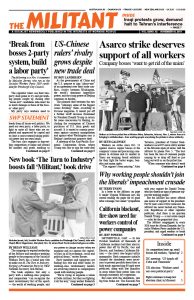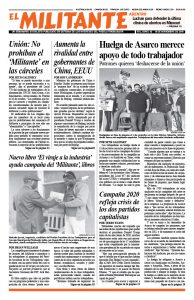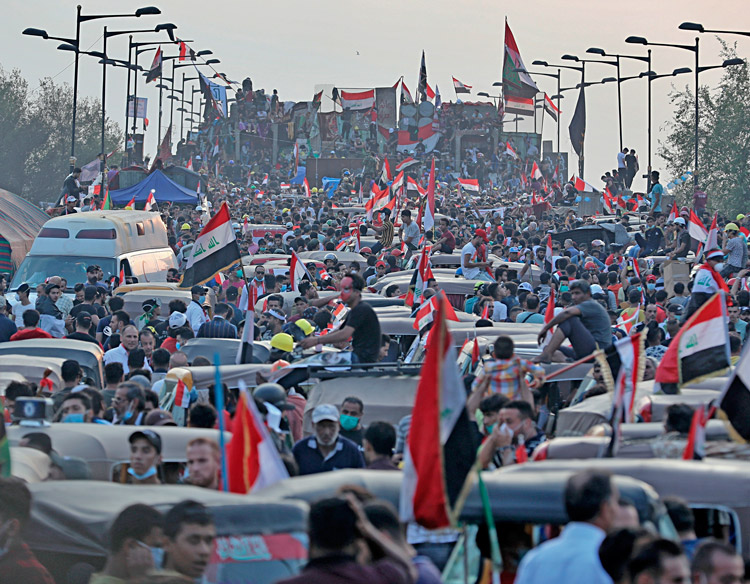Tens of thousands of Iraqis rallied in Baghdad Nov. 1 in the largest anti-government demonstrations since the U.S. invasion in 2003. The actions — fueled by deteriorating living conditions, demands for political rights and widespread anger about the Iranian government’s intervention in Iraq — have been gaining momentum in size and breadth despite the deadly violence inflicted on protesters by government-backed forces.
About 5,000 people also demonstrated in Basra that day. On Nov. 2 thousands of protesters blocked all roads leading to Iraq’s nearby main Gulf port Umm Qasr. Demonstrators had been blocking the port’s entrance since Oct. 29. They carried signs saying “Iran out of Iraqi affairs” and “The Iraqi government made by Iran,” reported Al Jazeera.
The Iranian rulers organize militias in Iraq, part of efforts to mobilize proxy forces in Lebanon, Syria and Yemen to impose their sway across the region and to threaten Israel.
“The government here relies on Tehran’s militias to defend itself. And they operate a ‘shoot to kill’ policy,’” Abdullah Salah Aldeen, a 25-year-old worker in a hearing aid center who participated in the Nov. 1 action, told the Militant in a phone interview the following day.
More than 250 people have been killed and 10,000 wounded in attacks on the protesters over the past month, in actions that have called for the “downfall of the regime.”
“We will continue blocking roads, organizing strikes and staying away from schools,” Aldeen said. Prime Minister Adel Abdul-Mahdi, leader of Iraq’s Shiite-led government, agreed to step down but only if a replacement is found. And President Barham Salih promised to hold early elections once a new voting law was in place.
Salih proposes to scrap the current setup, where people cast votes for coalitions of different parties, divided largely along religious lines, rather than directly for candidates. The system, established after the U.S. invasion of Iraq in 2003, has solidified the predominance of capitalist parties organized on a sectarian basis. “No one votes to elect the prime minister, he is appointed by the parliament,” Aldeen told the Militant.
“We want an end to sectarian power-sharing. Jobs should not be doled out based on whether you are a Sunni or Shiite,” Abdulraman Saad, a 22-year-old law student told Reuters. “We want all these parties gone and replaced with a presidential system.”
Abdul-Mahdi came into office a year ago once a deal was cut between a bloc of parties led by Shiite cleric Muqtada al-Sadr and Hadi al-Ameri, leader of the Tehran-backed Hasd al-Shaabi militia.
With al-Sadr now calling for new elections and for Abdul-Mahdi to resign, the head of the Iranian Revolutionary Guard Quds Force, Qassem Soleimani, traveled to Baghdad Oct. 30 to tell Ameri “and his militia leaders to keep supporting Abdul Mahdi,” Reuters reported.
The Iranian rulers fear the toppling of governments they back in Iraq and Lebanon would reduce their clout there and give confidence to working people inside Iran who staged anti-government demonstrations across the country in late 2017. Those protests were fueled by opposition to the deadly consequences of Tehran’s wars around the Mideast.
Washington continues to station 5,200 troops in Iraq, part of the vast forces it deploys across the region to defend the U.S. rulers’ interests against their rivals.


